Is your Zanzibar Gem just surviving and not thriving? Check out how to make the ZZ plant grow more stems without repotting!
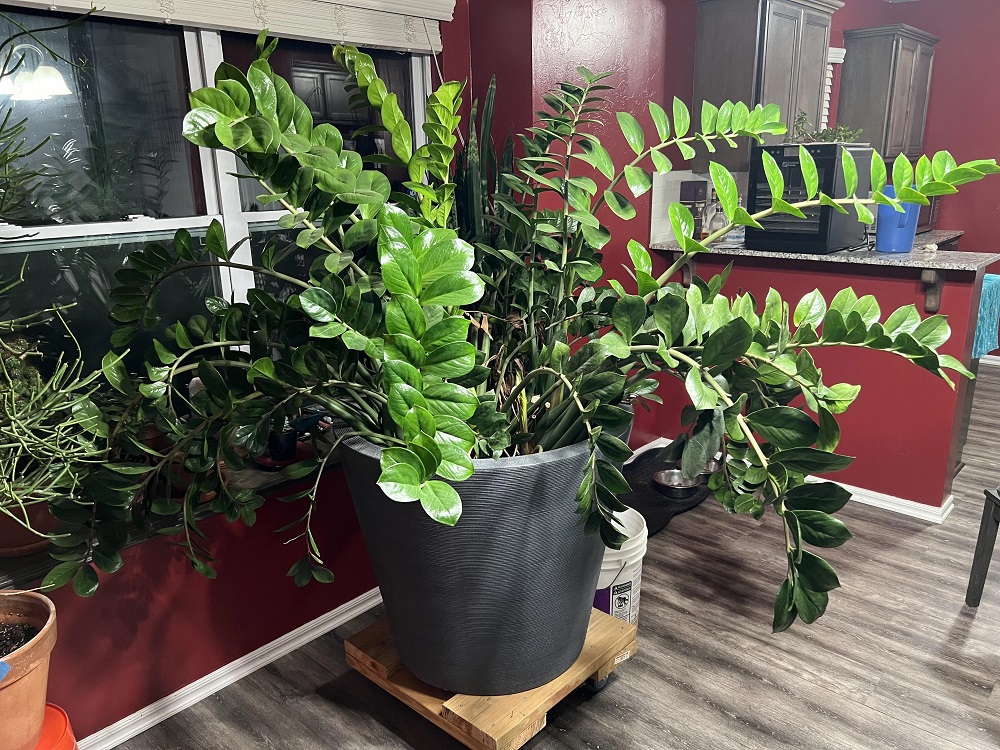
If you’re a new plant parent, chances are you’ve picked the undemanding and nearly impossible-to-kill ZZ plant as one of your first green companions. But if it’s looking more sparse than lush, don’t worry—there are easy ways to encourage your ZZ plant to grow more stems without repotting. Let’s jump in!
How to Make a ZZ Plant Grow More Stems Without Repotting?
1. Lots of Bright, Indirect Sunlight

ZZ plants, especially the ‘Raven’ variety, are hardy enough to survive quite well in low-light conditions. This is because of their dark leaves, which don’t need much sunlight. But can you really make your ZZ plant grow more stems with a lack of sunlight? The answer is a resounding no!
What you need to do is place your plant near a south-facing window where there can be a lot of bright, indirect sunlight. In case the afternoons are too harsh, you can add a sheer curtain.
An east-facing window might keep your plant looking healthy enough, but mind you, it won’t make it grow faster. East-facing windows generally only allow the gentle morning light and no harsh afternoon sun.
Pro tip: If you lack windows in these areas, choose full-spectrum grow lights, and don’t forget to rotate your plant for the best growth possible on your ZZ plants.
2. Cut Back on Watering
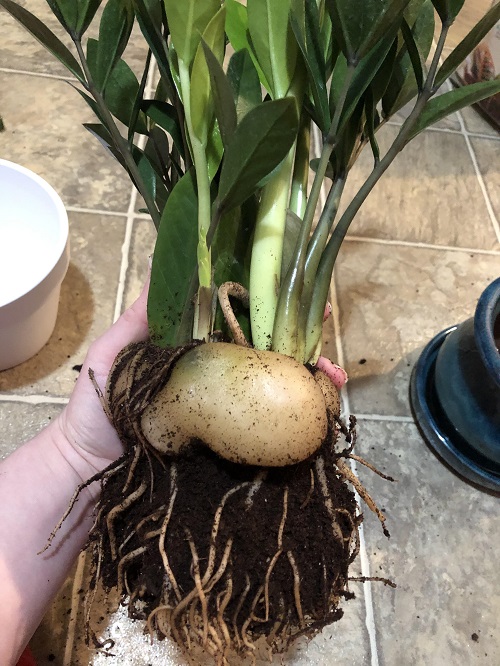
One big reason your ZZ plant isn’t sprouting new stems might be—you guessed it—overwatering. You may be giving your ZZ plant the same care as your other houseplants, but that’s like giving a camel a raincoat.
Most houseplants enjoy a weekly watering routine, but ZZ plants? Not so much! They’ve got thick stems, waxy leaves, and most importantly, chunky rhizomes underground that store water like a sponge.
So if you water too often, thinking you’re doing it a favor, you’re actually doing the opposite.
Try using a soil moisture meter and water only when it clearly reads “dry.” It’s a small investment that can save your plant—and your sanity!
Note: Always water your ZZ plant from the bottom. This ensures moisture reaches all areas evenly, unlike top-watering, which can leave dry spots.
3. Keep It Rootbound
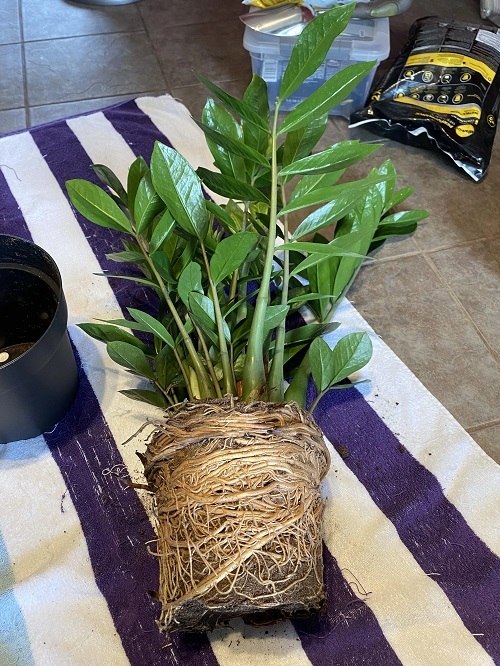
If you have seen a ZZ plant out of the soil, you must have wondered “How do all the roots AND rhizomes all live comfortably in the same pot?”. The truth is ZZ plants actually prefer having their roots all snug in the soil. In fact, keeping your plant rootbound will allow it to produce more stems rather than spreading more roots. The latter is surely not what we were going for!
The best part is ZZ plant do not need frequent repotting like houseplants. So, you can keep enjoying them in the same pot for a couple of years at least, without having to worry about repotting.
Here is a quick tip—if your plant is rootbound but showing no signs of growth, try gently loosening the top inch of soil and refreshing it with a fresh mix. This can give your plant a nutrient boost without the stress of repotting.
4. Grow ZZ plants from the Leaves
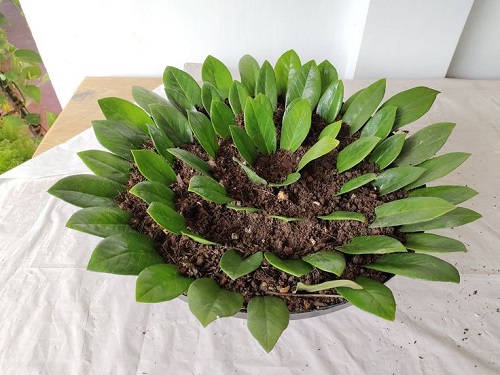
This method is incredibly easy, but the best part is that you can have a bunch of little plants that grow up together and look fuller without having to disturb the mother plant a lot. With a sharp, clean pair of pruning shears, make clean cuts to secure leaves, preferably from the bottom of the plant.
In a soil mix containing one part each of peat, coir, and perlite, make trenches with a small wooden dowel and place the ZZ leaves inside each trench. Compact the soil around each leaf so they don’t wobble around and grow into beautiful bushy ZZ plants!
Make sure all of your leaves are evenly spaced, and water the soil evenly. You must only water again when the soil has completely dried out.
Note: This method may take a lot of time, but it’s worth it if your goal is to have a fuller plant!
5. Careful Fertilizing Can be a Game-Changer
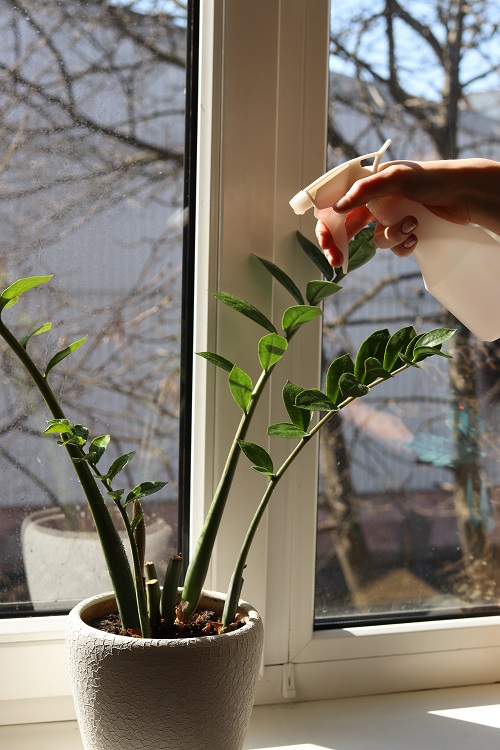
Plants need their occasional food to grow big and strong (and grow more stems!) and the ZZ plant is no different. To keep it happy and flourishing, you need to feed it with a balanced liquid fertilizer twice during spring and summer.
You won’t have to fertilize more than this. The rhizomes underneath the soil we talked about earlier don’t just store water but nutrients as well, for the plant to be used later!
Go easy on the feeding as too much fertilizer can burn the roots or cause leggy, weak growth. When in doubt, dilute the fertilizer to half-strength. Less is more when it comes to ZZs!
So, which of these tricks had you unknowingly skipped—and which one are you itching to try next? Share your ZZ plant stories with us in the comments below. We’d love to hear how yours is doing!





